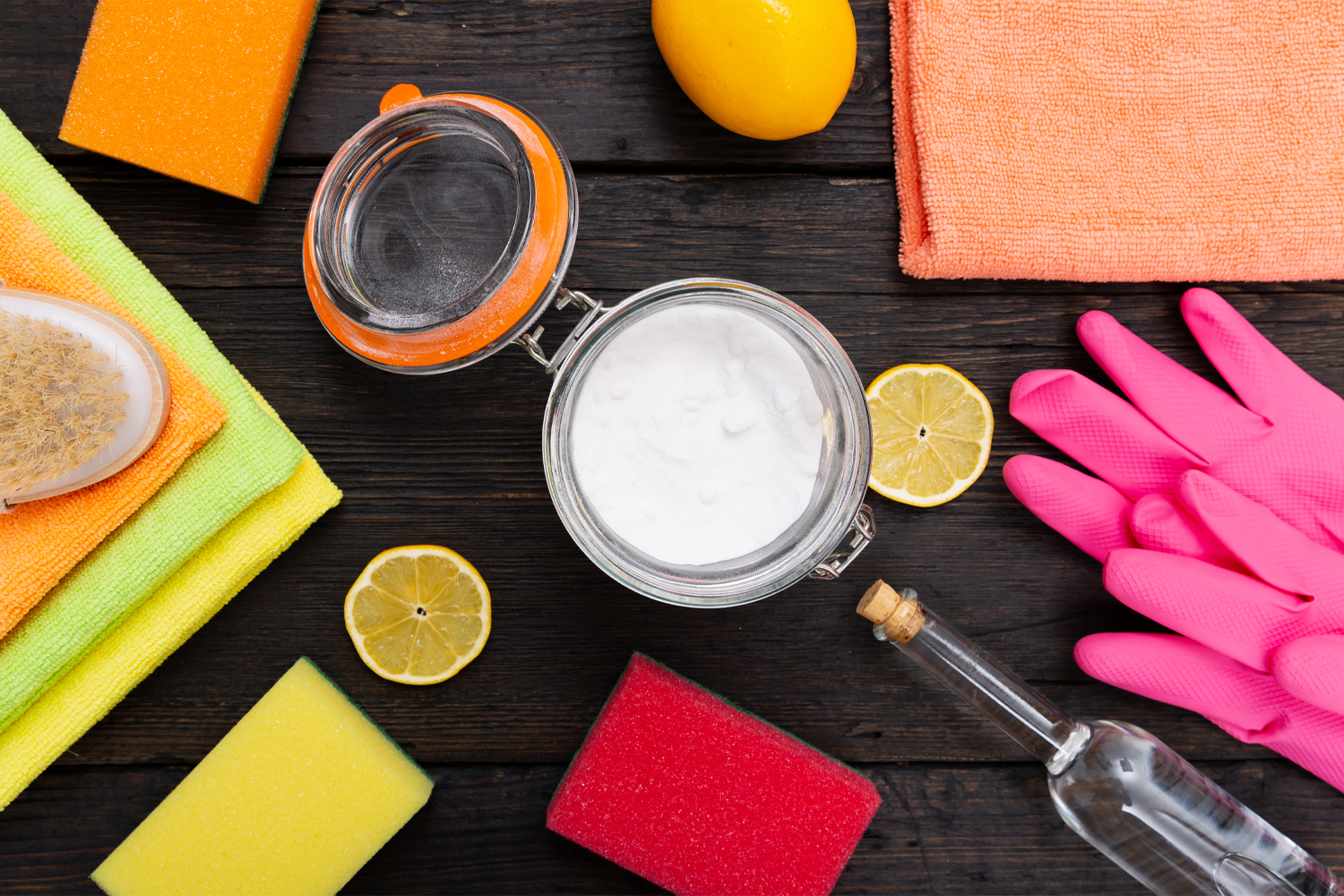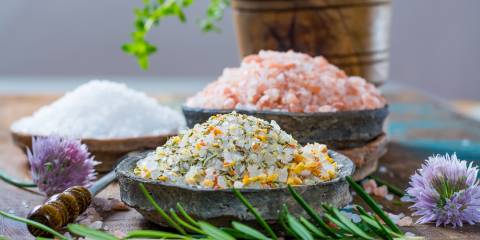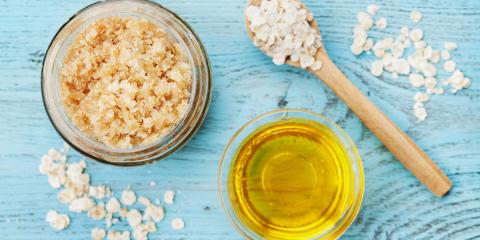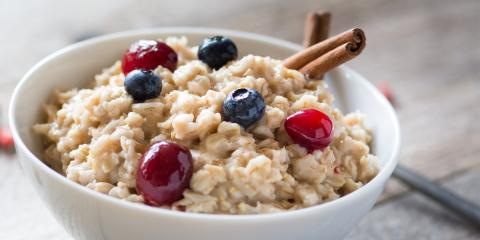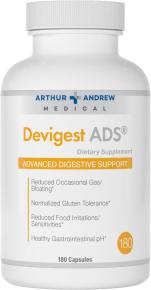Now — more than ever — we’re thinking deeply about the bacteria we could be bringing into our homes.
At the same time, as we stock our cleaning cabinets for the next major scrub-down, we might also be wondering if the products we use to clean our kitchens, bedrooms, bathrooms, dishes, and laundry are actually safe for us and our surrounding environment.
Luckily, there are a number of healthy, environmentally-friendly, and plant-based ingredients that can help you achieve a balance between sustainability and home safety.
Highlighted below are common planet-friendly ingredients that can help you clean your home safely as well as five toxic substances to eliminate from your all-natural regimen.
Eco-Friendly Cleaning Ingredients
-
Citric Acid
Citric acid, commonly found in citrus fruits, is a compound regularly used to flavor food and beverages. Research shows that the compound can prevent kidney stones and strengthen hair health. But it can be beneficial outside of the body too.
Because citric acid is nontoxic, a number of today’s natural disinfectants use the ingredient. Because of the compound’s acidity, it’s can remove various bacteria, rust, stains, and soap scum from surfaces and fabrics in the home. Aside from light messes, it can also be used to scrub out more serious issues, like mold and mildew.
-
Cellulase
Cellulase is a probiotic known primarily for easing digestion, however it's also a handy ingredient in natural detergent alternatives.
Research from 2018 shows that the enzymes in cellulase can speed up the detergency processes, soften clothes, and remove soil or stains.
Cellulase isn’t just a great nontoxic alternative, it’s also environmentally friendly and safer for clothing than bleach-based cleaners.
-
Methyl Ester
Methyl ester is initially found as an odorant of Jasminum grandiflorum flowers. There are a number of different methyl esters in natural cleaning products. The ingredient, which is a strong solvent, is good for scrubbing up grease and sticky spills. It's such a strong cleaning ingredient it's been listed on the EPA’s National Contingency Plan for oil spill cleanups.
While methyl esters are derived from flowers, many cleaning products combine them with other solvents like coconut, soy-bean, and citrus oils for extra strength.
-
Glycerin
Glycerin is a great example of a nontoxic, multipurpose substance derived from natural plant and animal sources. If you’re a fan of natural products, you might have already purchased hand soaps, moisturizers, deodorants, or digestive supplements with glycerin in them.
Like methyl ester, glycerin is also a strong solvent good for cleaning freezer spills and removing tar, mustard, or other deep stains. Because glycerin doesn’t irritate the skin, it can also be used to make dish or hand soaps.
-
Oleic Acid
Oleic acids — a healthy fat also known as omega 9 — is found in foods or ingredients like olives, olive oil, avocado oil, macadamia nuts, and almond butter. While research has shown that this omega fat can help with brain function, it’s also an emollient — or skin-softening agent — which makes it a solid ingredient in natural soaps or detergents.
-
Lavender Oil
Lavender oil is just one of the many beneficial essential oils you can use for housecleaning. While lavender can relax people with its calming scent, it’s also an insect and moth deterrent, which makes it a useful ingredient in cloth or outdoor cleaning supplies.
Toxic Cleaning Ingredients to Avoid
-
Chlorine Bleach
There’s nothing that ruins a well-cleaned home like the migraine-inducing small of bleach. Not only does bleach smell terrible, it’s toxic.
Bleach is especially dangerous when mixed with ammonia, discussed more in detail below. This mixture creates toxic gases called chloramines, which can cause coughing, nausea, shortness of breath, watery eyes, chest pain, and nose or throat irritation, and even pneumonia.
Depending on where you shop or live, it might be challenging to find cleaning products without trace amounts of bleach in them. Luckily, there are a number of healthy, natural, and powerful cleaning alternatives that might already be in your own kitchen. While you can start by looking for products with ingredients on the plant-based list above, you can also try implementing vinegar and baking soda into your cleaning regimen.
-
Ammonia
Among your local grocery store’s bleach-based cleaning products, you’ll also likely find a number of items that include ammonia — a pungent gas that’s often mixed with water to create cleaning solutions.
Like bleach, this ingredient is toxic. According to the New York Health Department, heavy exposure to it can cause burning of the eyes, nose, throat, and respiratory tract. This exposure can also result in blindness, lung damage, or even death. Meanwhile, inhalation of smaller amounts of ammonia can cause coughing, nose irritation, and throat pain.
-
Parabens
Since the 1920s, parabens have been used in many products including food, body care items, and cleaning liquids. Despite their popularity, parabens can dangerously impact the human body. Specifically, research has linked them to hormone disruption, infertility, and various cancers.
-
Triclosan (or TCS)
In 2016, the FDA banned triclosan’s use in hand soap because research could not demonstrate it was safe for skin. However, it has not yet been banned from some cleaning products or toothpaste.
What researchers do know is that too much exposure to this chemical, also known as TCS, can harm reproduction and the body’s ability to create mitochondria, or healthy cell membranes.
-
2-Butoxyethanol
2-butoxyethanol is described by the CDC as a colorless liquid with a mild odor. When exposed to it, the chemical can harm the eyes, skin, kidneys, and blood.
2-butoxyethanol is a heavy-duty solvent found in paint strippers, thinners, and household cleaners. The CDC notes that employees in many industries, including construction, printing, manufacturing, and cleaning may see higher instances of exposure.
Navigating Natural Cleaning Products
When choosing products for your next cleaning spree, be sure to research brand websites, physical labels, and product reviews to determine if an item and its ingredients are appropriate and safe for your home. Keep in mind that a number of great environmentally-friendly companies offer transparent product labels and ingredient guides directly on their websites.
For more tips on how to research and understand complicated product labels, check out this helpful article.
